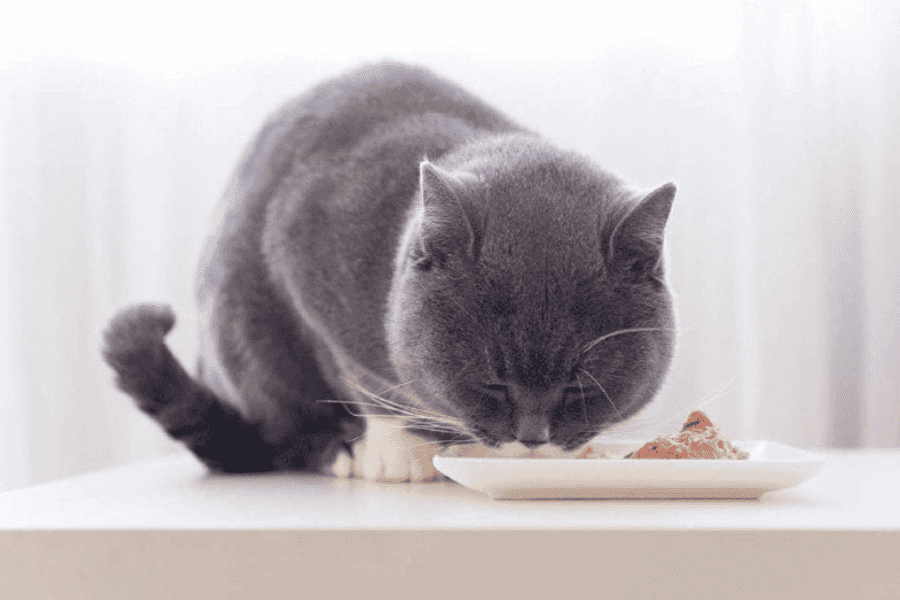What Should Cats Eat? What To Look For & Avoid

Cats are notoriously picky eaters. ![]()
As a cat owner, you want to feed your furry friend a diet that provides complete and balanced nutrition. But with so many cat food options on the market, how do you know what to choose?
This article will break down the ideal nutritional requirements for cats, explain what to look for and avoid in cat foods, and provide tips for transitioning your cat to a healthy diet.
Cats Are Obligate Carnivores

The most important thing to know about your cat’s dietary needs is that they are obligate carnivores. This means cats rely on nutrients found only in animal flesh to thrive.
In the wild, feral cats consume prey whole, including muscle meat, organs, bones, and stomach contents. This provides them with high levels of protein, moderate fat, and minimal carbohydrates.
Domestic cats still require this same general nutritional profile.
Key Nutrients for Cats
To stay healthy, your cat needs adequate amounts of certain vitamins, minerals, fatty acids, and amino acids. This includes:

Protein: Provides amino acids that cats cannot synthesize on their own. Needed for muscle growth and maintenance, immune function, vision, reproduction, and more.
Fat: Supplies energy and essential fatty acids. Helps absorb fat-soluble vitamins A, D, E, and K.
Vitamins and minerals: Support vital bodily functions like metabolism, nerve firing, bone development, and wound healing.
Taurine: An essential amino acid for heart and eye health. Cats cannot produce enough taurine on their own and must get it from food.
While these nutrients are critical, more is not necessarily better. Use caution with supplements, as overdoses of vitamins and minerals can harm your cat.
Wet vs. Dry: Which Is Better?
There are three main types of commercial cat food:
Dry Food
- Contains 6-10% moisture
- Typically grain-heavy with added meat flavoring
- More affordable and convenient than wet food
- Lower in protein and fat than prey animals
- May lead to dehydration or urinary tract issues
Wet Food
- At least 75% moisture
- Closer to a natural diet with more meat protein
- Helps cats get more water into their diet
- More expensive than dry food
- Can spoil quickly once opened
Semi-Moist Food
- About 35% moisture content
- Meat is the first ingredient
- Mid-range in price
- Can dry out quickly once opened
In general, wet food is more species-appropriate for cats as it has higher protein levels and moisture content. Canned or raw diets are ideal.
That said - feed your cat the food they enjoy and thrive on, whether that is dry, wet, or a mix. Just be sure it is high-quality and balanced.
Choosing a Nutritionally Complete Cat Food
When comparing cat food options, start by reading the label. Look for:

Meat, poultry or fish listed as the first 2-3 ingredients. Indicates high animal protein content.
An AAFCO nutritional statement confirming the food is complete and balanced.
Food matched to your cat’s life stage - kitten, adult or senior.
Avoid foods with lots of grains, fillers, artificial flavors/colors or by-products.
Prioritize quality over low cost. Cheaper foods are highly processed with less nutritional value. Investing in better cat food now will pay off with veterinary savings down the road.
Transitioning Your Cat to a New Food
Sudden changes in diet can upset your cat’s digestive system. Follow these tips to transition foods gradually:

On day 1, mix a small amount (25%) of the new food into their current food.
On day 2, increase the ratio to 50% new food, 50% old food.
On day 3, feed 75% new food mixed with 25% old food.
Starting day 4, feed 100% new food.
Transition over 5-7 days. Move slower if needed.
Ensure fresh, clean water is always available.
Monitor your cat’s appetite, energy levels, coat, litterbox usage and any vomiting/diarrhea during the transition. Seek veterinary advice if concerns arise.
People Foods Cats Can Eat
While commercial cat food should be the basis of your cat’s diet, treats of human food (in moderation) can add flavor and variety. Some healthy options include:

Cooked lean meats like chicken, beef or turkey (unseasoned)
Cooked fish like salmon, tuna or sardines (no raw fish)
Whole grain oats, barley or brown rice
Small amounts of cheese
Cooked eggs
Veggies like steamed broccoli, green beans or carrots
Avoid treats with sugar, salt, spices, onions, garlic, chocolate, alcohol or xylitol. And limit overall calories from treats to 10-15% of their daily intake.
Foods Cats Should Never Eat
Some human foods are highly toxic to cats. Never feed your cat:

Chocolate
Grapes, raisins, currants
Onions, garlic, chives
Candy, gum or food/drinks with xylitol
Caffeine
Alcohol
Raw meat, eggs or fish
Bones
Dairy products
Salt, seasonings, sauces
Even small amounts of these foods can be deadly. Keep people food safely away from your cat’s reach. Consult your vet if poisoning is suspected.
Feeding Recommendations by Life Stage
Tailor your cat’s diet to their specific needs at each life stage:
Kittens
- Feed kitten formula until 12 months old
- Requires higher protein, calories, vitamins, fatty acids
- 3-4 meals per day
Adults
- Feed adult cat food
- 2 meals per day for set calories
- Free-feeding leads to obesity
Seniors
- Feed senior cat food
- Lower calorie but higher protein
- 3-4 smaller meals
- Support weight loss if needed
- Increased moisture beneficial
Follow your vet’s personalized recommendations for any health conditions.
Conclusion
Feeding your cat an appropriate, nutritionally balanced diet is one of the best ways to set them up for a long, healthy life.
Partner with your veterinarian to choose quality foods tailored to your cat’s needs and preferences. With some care and planning, you can ensure your feline friend enjoys mealtimes for years to come.
Tags
Share
Table Of Contents
Related Posts
Quick Links

